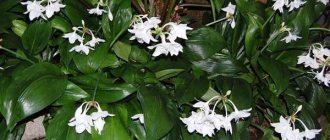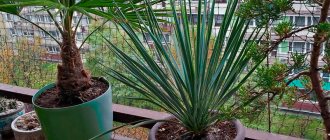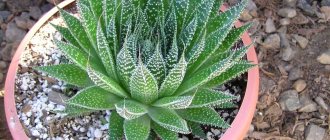In this life, not only people and animals get sick, but also plants . Orchids are no exception. Tropical beauties, finding themselves in conditions that are unusual for them, become more weakened, any infection begins to cling to them, or the one that was previously in them is activated.
To prevent the plant from dying, it is necessary to accurately determine the cause of the orchid disease .
When it is installed, then you can apply the necessary set of measures to treat the orchid. Important! Before treating a plant, determine the exact cause of the disease.
What do you need to know?
Modern stores offer everything you need to create favorable living conditions and long-lasting flowering. It is important to follow the correct care and breeding steps: correct pot, morning watering, spring-summer feeding, rare transplants, temperature and light conditions.
If you were given an orchid in a pot or you bought the plant yourself, it will be important to learn how to care for this rather capricious flower and how to monitor its health. Growing rules depend on the type of flower , on the substrate in which it grows in the store, and also on what it was fed with.
Important : Any type of orchid develops favorably at temperatures from 18 to 27 degrees during the day and 13-24 degrees at night!
Photo
In the photo below you will see flowers called “orchids” growing in pots, and you will understand how plants should look if they are properly cared for.
Conditions of keeping and breeding
Orchids require different care than houseplants . There are several distinguishing criteria.
- Transparent pot. It is easier to control the condition of the root system, whether it is rotting. A healthy plant has light green or pearl colored roots.
- Special substrate. The plant grows in a special substrate consisting of several components:
- bark;
- sphagnum moss;
- peat;
- Styrofoam;
- expanded clay
- For irrigation, soft, melt or rain water, boiled or settled, is required. Do not water the orchid with running water.
- For proper growth and development of an orchid, moisture and regular spraying are necessary.
Read more about the conditions for keeping orchids here.
Reproduction
Orchids are propagated in several ways:
- Vegetative – suitable for mature plants of all varieties. The flower is taken out of the pot and shaken off the ground. Then the root system is divided with garden shears. The sections are sprinkled with charcoal and placed in different containers. The soil is sprayed daily until the first shoots form.
- By layering. Formed on long or cylindrical shoots. Some of the stems are bent and placed in a greenhouse made from plastic cans. Dormant buds are moistened and then wait for rooting. The additional shoot is warmed up; after a few weeks it will form new foliage. The cob is then separated from the main shoot and moved to a pot.
- Young shoots. The cob located on the side is separated and treated with charcoal. With high-quality watering, the shoot will soon form roots.
Tips for beginners on how to properly care for a flower at home
Proper care of a plant involves features depending on the time of year, type of flower, and flowering.
in winter
During the winter season, orchids go into a dormant state . In December and January, the plant does not need fertilizer. Watering becomes rare, once a week. An influx of fresh air is necessary to aerate the roots. Daily spraying is needed or the pot needs to be placed in wet pebbles.
As February begins, the length of daylight increases. At this time, orchids begin to wake up and lay flower stalks. From this point on, watering becomes more frequent and fertilizers are added. If the location of the flower is on the sunny side and the temperature rises, the number of sprays of the flower increases. Regular ventilation is required.
We recommend watching a video about caring for orchids in winter:
In the spring
Spring - preparation for the summer period.
Intensive growth begins in March, so you need to water and feed regularly. It is important to ensure that the plant is not exposed to sunburn after winter shade. On the sunny side, during the daytime it is better to shade the plant. In addition to growth, pests become more active. Regular inspection of the plant for the presence of parasites and treatment are necessary procedures in the spring . The beginning of April is the flowering period, so spraying, watering and fertilizing are needed regularly. And in May, after warm weather sets in, the pot with the plant should be taken outside.
In summer
In summer, orchids feel better, because the climate is close to their natural one. The homeland of orchids is the tropics and in addition to temperature, humidity and shading are necessary. Starting from June, plants need to be frequently sprayed and the room ventilated, preventing the development of bacteria and rotting of the roots. If in May it was still impossible to put the pots outside, then in June is the time to do this.
Starting in July, during the period of active sun, it is important to prevent sunburn . Therefore, watering and spraying are carried out early in the morning and in the evening, after sunset. During the daytime, creating shade is a must. It is important to monitor the roots to prevent the development of fungal growths.
Attention : At the end of summer, with the beginning of August, the sun is no longer so active, but watering, spraying and fertilizing remain in the same regime as in July. If your plants are outside, it's time to bring them indoors.
We recommend watching a video about caring for orchids in the summer:
in autumn
In autumn, some types of orchids still bloom and send out arrows . But the regime of watering, spraying and fertilizing needs to be reduced, preparing the plants for the winter dormant period. You can no longer shade orchids. The sun is not so active and burns will not appear. Starting from October and November, some plants lose their leaves and turn yellow.
It is necessary to reduce watering and lower the temperature. From the moment the heating is turned on, it is necessary to humidify the air in the room and spray it. If the orchid is blooming, then lighting is necessary, since daylight hours are already short.
By following the basics of caring for plants at certain times of the year, you can get long and frequent flowering . The plant will feel good and will not require additional costs. But, there are features not only at different times of the year. Find out more about how to help an orchid survive the cold season here.
Winter watering regime
The main rule of winter watering is to reduce the frequency of watering and the dose. During this period of cooling, even in orchids without an obvious state of dormancy, life rhythms slow down slightly, that is, the roots simply will not have time to absorb the usual amount of water. Observing this is not difficult: just check the moisture content of the substrate and monitor the color of the roots. Healthy roots have a light green or slightly lilac tint. If the roots turn gray, they urgently need to be watered. You can find out how to do this correctly in our special section.
The most common mistake gardeners make is improper care of plants after watering. Without waiting for the moment when the roots have absorbed enough water and the excess moisture has completely drained into a special vessel under the pot, novice gardeners return it to its original place (most often a window sill) along with that same vessel. It is necessary to take into account that near the window the air temperature is slightly lower than in the entire room, and the roots still continue to absorb the already cooled moisture, in the process of which they themselves become supercooled. This situation is ideal for the development of diseases in orchids (most often these are fungal diseases). To prevent such an outcome, it is not necessary to remove the plants from the window; it is enough to place a sheet of foam plastic between the plants and the window sill, and place the flowers themselves in special pots with a recess. This will provide thermal insulation and protection for the orchids.
If you like to give your orchids a warm shower as watering, then it is best to do this in the evening and leave them to dry overnight in the bathroom. This trick will help prevent the formation of rot at the growing point. And the humid and warm environment of the bathroom is close to natural conditions, so the orchids will be grateful to you for such a gift.
How to care for different types - differences
Differences in care also depend on the type of plant. Each type requires a special approach.
Phalaenopsis
The most common type. It is important to maintain a temperature of 16 to 24 degrees. The humidity level is desirable 40-50%, lighting 9-10 hours on a shaded window. Watering - by immersing the pot in water. Feeding in winter - once a month. In summer, weekly during watering. The substrate must contain bark without peat and foam .
We recommend watching a video about the rules of caring for Phalaenopsis orchids:
Dendrobium
The main rule in care is the difference in temperatures in winter and summer. In summer the temperature ranges from 18-25 degrees, in winter 12-18. The humidity level required is higher than for phalaenopsis. Additional moisture, aquariums or wet pebbles are necessary. Watering mode is regular. Feeding during watering during the flowering period. The substrate consists of bark and moss.
We recommend watching a video about the rules of caring for Dendrobium orchids:
Cumbria
This species is demanding on lighting. Light is needed at least 12 hours a day. If there is not enough lighting in winter, it will get dark. A temperature difference is also necessary. 13-16 degrees at night and 17-23 during the day. The preferred substrate is bark, coconut fibers and coal . During the flowering period and the dormant period, the care requirements are different.
We recommend watching a video about the rules for caring for Cambria orchids:
Step-by-step instructions for moistening the soil during bud opening
At home
How to water a blooming orchid growing at home:
- establish regular watering with alternating evaporation of moisture (in a room with sufficient humidity and sufficient light - once every three days);
- It is better to underwater than to overwater. In summer, water evaporates faster, so you should water more during this period, and more moderately in spring. In winter, special control is needed, since the orchid often blooms at this time, gardeners make the mistake of moisturizing the plant in the same way as in summer. This is wrong; in winter, watering should be kept to a minimum;
- excess water is drained from the pan (the orchid is extremely sensitive to excess moisture);
- water with soft, settled water;
- water with warm water (about +37 degrees Celsius).
We wrote here about how to water an orchid at home so that it blooms well, and here we talk about how to do this if the flower grows in a pot or cache-pot.
On the street
For orchids outdoors:
- use soft (rain or heated melt) water;
- allow the soil to dry almost completely;
- water more often than if the orchids were in the room;
- Spray once every three weeks with a mixture of water and horticultural oil (or dishwashing detergent) to protect against insects.
Caring for an orchid requires certain knowledge. In the hands of an inexperienced gardener, this flower will not reveal its full potential, diseases will begin and flowering will stop. Most flowers of this species are not found in water in nature, due to the fact that their roots do not tolerate stagnant moisture and can rot from the salts in its composition.
The orchid is considered a finicky plant, but if certain rules are followed, this tropical beauty will thrive, regularly producing clusters of magnificent flowers.
If you want to grow a healthy and beautiful orchid that will please the eye, we advise you to read our articles on how to water a flower, including when transplanting it into another pot.
Actions before and after flowering
When the buds open, the orchid requires special attention.:
- Even during the formation of buds, watering should be doubled.
- During the flowering period, the temperature at night should be increased by 5-7 degrees.
Actions after flowering:
- After flowering, you need to cut off the old peduncle.
- Feed the orchid with mineral fertilizer.
- During the dormant period, watering is reduced, the plant must gain strength for new flower stalks.
A practical guide for beginners from A to Z
There are several points that are important after purchase.
Adaptation
Immediately after purchase, it is better to keep the orchid separately from other house plants . Do not feed or water for two weeks. The orchid must get used to the new microclimate. After this time, you can move the pot to the window.
We recommend watching a video about adapting an orchid after purchase:
Choosing a pot
The optimal container for an orchid is a plastic transparent pot. Plastic does not allow the plant to dry out or, on the contrary, rot. It is convenient to use and durable. A transparent container allows you to monitor the condition of the orchid's root system. It shows how moisture is consumed and how the substrate dries. The main thing in an orchid pot is to ensure the outflow of moisture, ventilate the roots, and safely remove large roots that extend beyond the pot.
We recommend watching a video about choosing a pot for an orchid:
An orchid needs a special substrate . These plants do not grow in the ground. It consists of bark, moss, foam plastic, expanded clay, and charcoal.
Transfer
After adaptation, some flowers require transplantation. There is no need to treat the roots or leaves.
During a normal adaptation period, the orchid activates its defenses. Transplantation is necessary for the plant to grow properly and form a root system .
You need to take it out of the pot, let the roots dry and plant it in a suitable substrate. If the orchid is immediately planted in the substrate, replanting is not required for about 2 years.
We recommend watching a video about proper orchid transplantation:
Lighting
The lighting determines whether the plant will bloom . With a lack of light, the leaves will stretch out and darken, and there will be no flower stalks. Orchids prefer a lot of diffused light. Direct sunlight can cause burns. If the flower is exposed to direct sunlight, the plant needs to be darkened.
In autumn, sun activity decreases, and there is no need to darken the plant. A dormant period begins, during which new flower stalks are formed. The duration of daylight should be at least 10 hours. In winter, in our latitudes, additional lighting with lamps will be required.
Temperature
Particular attention should be paid to the temperature difference between day and night. But almost all types of orchids feel great at temperatures of 18-27 degrees during the day and 13-24 degrees at night. Find out more about air temperature as a guarantee of orchid health here.
Watering and spraying
Orchids cannot tolerate stagnant moisture . If there is too much moisture, the roots can rot and the leaves become soggy. And the plant tolerates periods of drought better than high humidity, since the roots are able to absorb liquid for future use. Increased watering is required only for some species, as well as during the period of throwing out flower stalks and flowering itself.
The best watering method is to immerse the flower pot in a container of warm water. Spraying is required. From a special spray bottle, in the morning or evening, when the sun is not active, the orchid is irrigated with warm, settled water. In winter, spraying is also necessary, especially when the heating is turned on and the room is extremely dry.
During the flowering period, you need to make sure that water does not get on the buds and flowers . It is better to irrigate the top layer of soil and leaves.
Tip : In winter, at low temperatures and short daylight hours, the plant does not need abundant watering. During the dormant period, it is also necessary to reduce watering to a minimum.
We recommend watching a video about the types of watering of different orchids:
Top dressing
Orchids do not need constant feeding . This is necessary during the period of intensive growth and flowering. Fertilizers must be applied during watering once every 2-3 weeks. The fertilizer must be special for orchids. You cannot apply fertilizers intended for other flowers.
We recommend watching a video about the rules of feeding orchids:
Reproduction
There are several ways to propagate an orchid. This is reproduction by children, layering and vegetative. Propagation by babies is propagation by new small plants that appear on the plant. This usually happens when there is a large amount of nitrogen.
If children appear, you can wait until the roots appear, carefully separate them from the main plant and plant them in a separate pot. Reproduction by layering requires the construction of a greenhouse over the bent part of the stem . The leafless shoot in the greenhouse needs to be moistened, kept warm, and soon buds will appear, and then new plants with roots and leaves.
After the roots appear, young plants need to be separated from the mother shoot, transplanted into a separate pot and kept in the greenhouse for some time.
Vegetative propagation involves dividing a large plant with a strong root system into several different plants. Separated plants need to be watered and sprayed a little until new leaves and shoots appear . This is a sign that the plant has taken root and is doing well.
Features of winter watering
Watering is life for a plant. But in the cold season it is necessary to water much less often. Watering orchids in winter is usually done once every week and a half.
When caring for these tropical beauties, it is important to remember that they do not tolerate hypothermia. The main mistake that beginners encounter is when, when watering, immersing a pot in a container of water and then removing it, they do not allow the water to drain properly from the pot.
After which it is placed on the windowsill, it cools there, the remaining water in the pot and substrate also cools and the roots gradually absorb the supercooled water. The result is that the plant begins to suffer over time due to the development of bacterial and fungal diseases.
In order to avoid this problem, you need to provide the flower with good thermal insulation. It is not necessary to move the pot from the windowsill; it will be enough to insulate the place where it stands. To do this you will need a small piece of foam. This material does an excellent job of thermal insulation. You will need to place the pot on the foam; In addition, it would be nice to place it in a pot with a high bottom. The water that remains in the substrate will gradually flow into the pots and the roots will not absorb it.
For orchids in winter, care plays a vital role. Since heating in apartments dries out the air, the room should be humidified so that these flowers feel comfortable. In addition to dry air, which is not good for plants, spider mites multiply in dry environments. To increase air humidity, you can turn on a humidifier. Another good way to increase the humidity in a room is a small decorative fountain, which, on the one hand, decorates the interior of the room, and on the other, humidifies the air. For such care, orchids will certainly thank you with beautiful and healthy flowers.
Humid and warm air is an ideal environment for flowers. From time to time, those varieties of orchids that do not hibernate can be watered from the shower. But in this case, after a shower, they need to be left in the bathroom until the necessary moisture is completely absorbed. The ideal time to take a shower is in the evening. After this procedure, the flowers will be in a humid environment, and this is exactly what they need; Overnight the plant will have time to dry, which will prevent water from accumulating on the leaves and at the growing points of the leaves. It is not recommended to spray flowers in winter. But in extreme cases, if, for example, you need to remove pests from leaves, spraying should be in the form of hot water mist. Such irrigation will not harm the flowers.
When caring for your orchid in winter, do not forget about lighting. In winter there is often a shortage of sunlight. And for these plants, light is necessary so that they can fully develop and eventually be able to lay flower buds. In winter, it is best to place a flowerpot with a flower on the windowsill of a window that faces south. Then he will be able to receive significantly more sunlight than being in a darkened room. Or you can provide the flower with additional lighting using a fluorescent lamp. The lamp should be at least 20 centimeters from the plant. In this case, it is not necessary to place the flowerpot on the windowsill; you can choose any warm place for it, which you will then equip with lighting.
The optimal air temperature for a flower in winter is from +15 to +23 degrees. Orchids love not only warmth, but also fresh air, but, of course, not frosty air. When ventilating the room, you should avoid drafts, as this can cause the leaves to quickly freeze. Therefore, when ventilating the room, you need to remove the flowerpot from the windowsill so that cold air currents do not fall on it. You also need to make sure that the leaves do not come into contact with the cold glass.
There is no need to fertilize plants too often in winter. Since the daylight hours are long in summer and spring and the air temperature is quite high, the flower quickly processes nutrients, and in winter, due to lack of light and heat, these processes slow down.
All about the consequences of improper cultivation
Beginners often make mistakes in the orchid care procedure. As a result, the plant does not bloom, the leaves may become soggy or darken and stretch out, parasites may appear, and the plant may even die.
Basic mistakes
- Incorrect watering . You cannot water an orchid from a watering can. It is better to water by immersing the pot in water.
- Sunburn on leaves . This occurs if the plant is exposed to direct sunlight. It is better to place a pot with a plant on the northern, western or eastern sides of the window. If this is not possible, then shading is required.
- High temperature level . In summer, the leaves may soften due to increased air temperatures. In winter due to the proximity of a heating device. It is necessary to ventilate the room more often, but avoid drafts.
- No temperature difference between day and night . For an orchid, it is important to lower the air temperature at night. When this does not happen, there may be no flowering.
- Unsuitable substrate . The substrate must be selected based on the type of orchid. It is unacceptable to plant the plant in the ground. Prolonged ventilation and drafts can have a negative impact and the plant will shed all its leaves. When ventilating, you need to move the pot away from an open window, especially in the cold season.
The main signs of improper care are:
- wrinkling and lethargy of leaves;
- yellowing;
- spots and dark spots;
- growths, root rotting;
- lack of flowering;
- throwing off leaves.
Signs of insufficient humidity
Important! Each orchid has its own preferences regarding humidity. Conditions that are suitable for one species may be completely unacceptable for another .
Signs that orchids are uncomfortable due to dry air :
- the tips of the leaf blades turn yellow and dry out;
- growing root tips die off;
- the buds fall off as soon as they bloom;
- the break between flowering phases is prolonged;
- leaf turgor decreases;
- the formation of a young leaf collected into an accordion;
- the orchid languishes, despite feeding and watering.
Diseases and pests of orchids
The consequences of improper care can be the development of diseases or pests on a weakened plant.
Main diseases of orchids:
powdery mildew;- gray rot;
- brown rot;
- black rot;
- root rot;
- bacterial diseases;
- viral and fungal in nature.
The most common pests are:
- mealybug;
- scale insect;
- whitefly;
- aphid;
- spider mite;
- nematode.
We recommend watching a video about diseases and pests of orchids:
Also on our website we told you how to properly prune orchids and how to grow a flower without soil at home. You can learn about the rules for caring for mini-orchids and the difference in keeping dwarf and regular species in this material.











